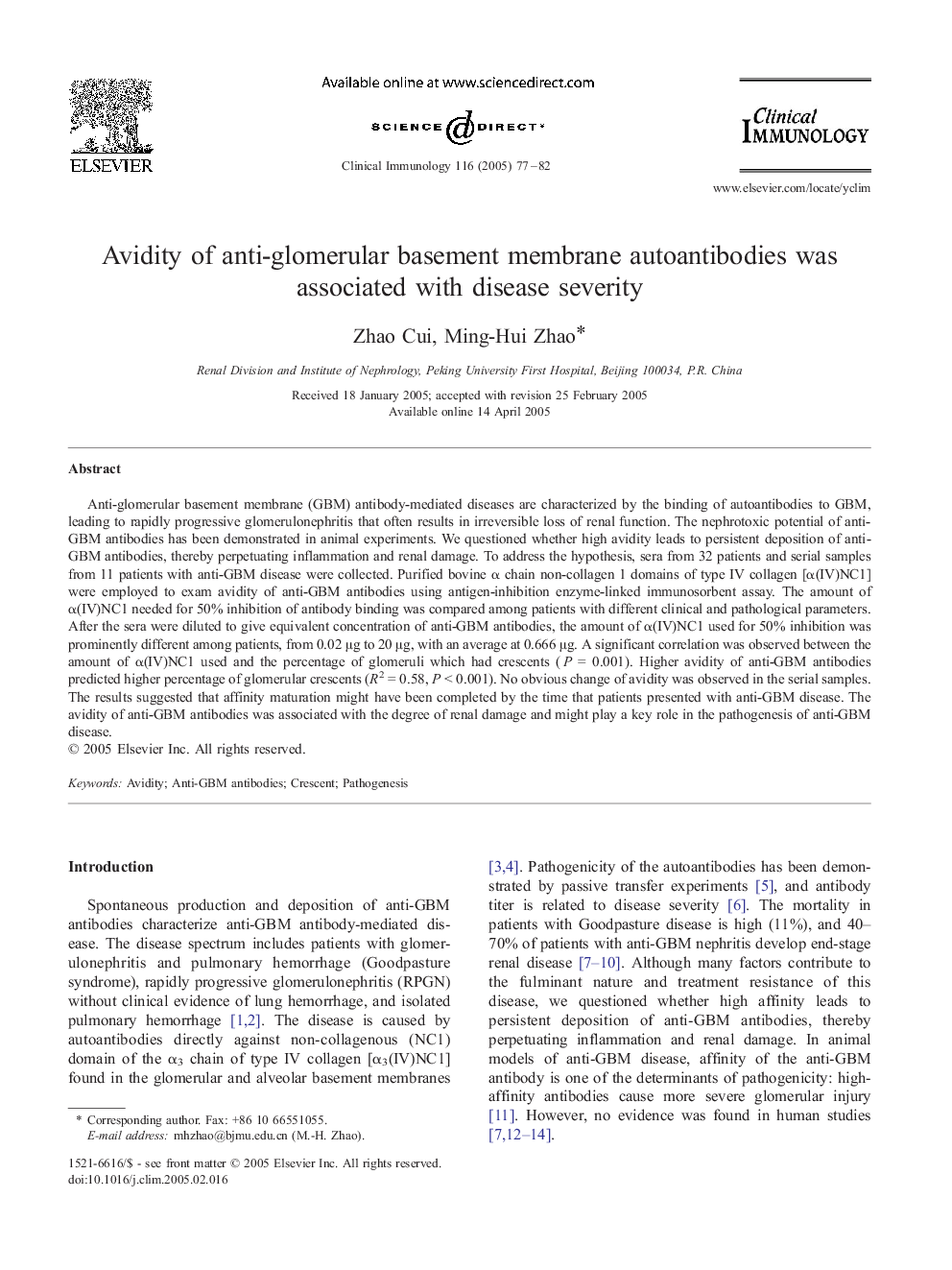| کد مقاله | کد نشریه | سال انتشار | مقاله انگلیسی | نسخه تمام متن |
|---|---|---|---|---|
| 9236688 | 1207485 | 2005 | 6 صفحه PDF | دانلود رایگان |
عنوان انگلیسی مقاله ISI
Avidity of anti-glomerular basement membrane autoantibodies was associated with disease severity
دانلود مقاله + سفارش ترجمه
دانلود مقاله ISI انگلیسی
رایگان برای ایرانیان
موضوعات مرتبط
علوم زیستی و بیوفناوری
ایمنی شناسی و میکروب شناسی
ایمونولوژی
پیش نمایش صفحه اول مقاله

چکیده انگلیسی
Anti-glomerular basement membrane (GBM) antibody-mediated diseases are characterized by the binding of autoantibodies to GBM, leading to rapidly progressive glomerulonephritis that often results in irreversible loss of renal function. The nephrotoxic potential of anti-GBM antibodies has been demonstrated in animal experiments. We questioned whether high avidity leads to persistent deposition of anti-GBM antibodies, thereby perpetuating inflammation and renal damage. To address the hypothesis, sera from 32 patients and serial samples from 11 patients with anti-GBM disease were collected. Purified bovine α chain non-collagen 1 domains of type IV collagen [α(IV)NC1] were employed to exam avidity of anti-GBM antibodies using antigen-inhibition enzyme-linked immunosorbent assay. The amount of α(IV)NC1 needed for 50% inhibition of antibody binding was compared among patients with different clinical and pathological parameters. After the sera were diluted to give equivalent concentration of anti-GBM antibodies, the amount of α(IV)NC1 used for 50% inhibition was prominently different among patients, from 0.02 μg to 20 μg, with an average at 0.666 μg. A significant correlation was observed between the amount of α(IV)NC1 used and the percentage of glomeruli which had crescents (P = 0.001). Higher avidity of anti-GBM antibodies predicted higher percentage of glomerular crescents (R2 = 0.58, P < 0.001). No obvious change of avidity was observed in the serial samples. The results suggested that affinity maturation might have been completed by the time that patients presented with anti-GBM disease. The avidity of anti-GBM antibodies was associated with the degree of renal damage and might play a key role in the pathogenesis of anti-GBM disease.
ناشر
Database: Elsevier - ScienceDirect (ساینس دایرکت)
Journal: Clinical Immunology - Volume 116, Issue 1, July 2005, Pages 77-82
Journal: Clinical Immunology - Volume 116, Issue 1, July 2005, Pages 77-82
نویسندگان
Zhao Cui, Ming-Hui Zhao,